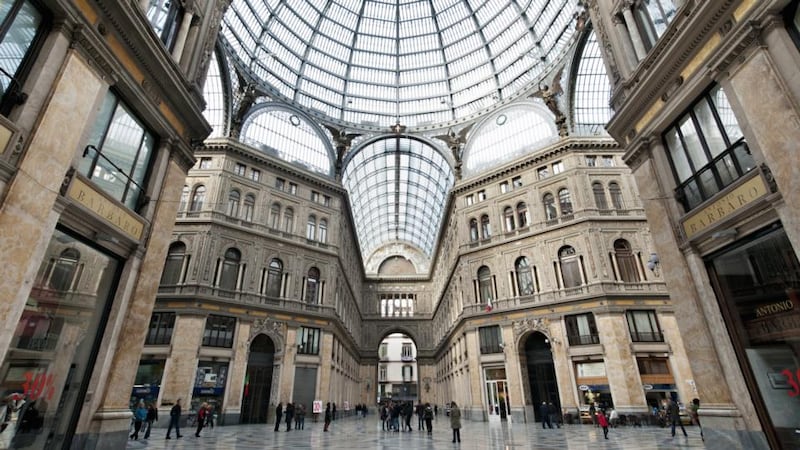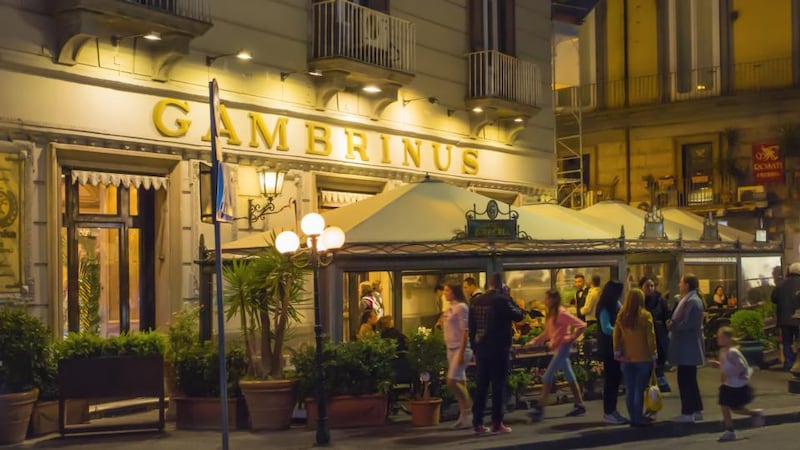See Naples. And sigh. Formerly the glorious capital of a separate kingdom, Italy’s third-largest city – after Rome and Milan – spiralled into decline following Italian
reunification in 1861.
Drained by emigration, ravaged by the second World War and plagued by corruption, Naples had, by the late 20th century, become associated with crime, poverty and urban decay.


Once a favourite destination of Grand Tour voyagers, the city became a gateway to the splendours of the Amalfi coast and the swanky resort islands of Capri and Ischia – rather than a place to linger.
However Naples is undergoing a renaissance and, while still scruffy round the edges, it deserves to regain its place in the list of the world’s must-see destinations. Naples has some of Europe’s best art, architecture and antiquities – and is brimming with La Dolce Vita’s inimitable mix of stylish elegance and spectacular kitsch.
It's doable for a weekend city break – about three hours flight time from Dublin with year-round service by Aer Lingus, albeit at fares that could benefit from some Ryanair-style competition.
Most visitors, however, seem to be day- trippers – bewildered herds disgorged into the panting heat from gargantuan cruise ships or adventurous types venturing in, by train, from Sorrento. But the city merits at least a few days exploration.
Strolling through Naples city centre is like wandering on to the stage during a grand opera – it's dazzlingly lit, fizzing with sound, vibrant with colour and set against the ravishing backdrop of Mount Vesuvius overlooking the famous bay which the Italians know as Golfo di Napoli.
The terrace of Gambrinus, the smartest cafe in Naples, is as good a place as any to start and the location, on a corner site adjacent to the open spaces of Piazza del Plebiscito, is perfect for people-watching.
White-jacketed waiters, prowling like Versace catwalk stars, serve possibly the country's most exquisite pasticceria – notably a wickedly decadent rum baba.
A glass display case in the café's stunningly lavish interior contains an unwashed coffee cup used by Pope Francis during his visit to the city in March.
The Italians do like relics. A glass vial of the blood of San Gennaro, the city’s patron saint, is kept in the truly awesome Duomo cathedral and reputedly liquefies on important occasions. Wimpled nuns reacted like rock groupies when the blood, on cue, liquefied during the papal visit.
There’s little point in fretting over guidebooks or TripAdvisor for dining recommendations. It’s hardly possible to eat badly in Naples and, yes, the pizza does live up to the quality expected in the city where it was invented.
Don’t even contemplate renting a car. Driving really is insane. Public transport is excellent and cheap: plentiful buses; a spanking, new air-conditioned metro; multiple funiculars and reasonably-priced taxis – if your nerves can withstand ‘Dolmio man’– no seat-belt, obviously – speeding along a cobbled street the width of Corriere della Sera while texting (yes, texting) Mamma about dinner arrangements.
Walking is best and allows access to the intriguing, narrow alleys where washing still flaps picturesquely from balcony-strung clothes-lines.
Although Pompeii is nearby, a visit there is probably too time-consuming during a short visit and, frankly, there’s no great need. All the best – and utterly enthralling – treasures found during the excavations of the town, buried by the volcanic eruption in 79 AD, are on display in the mercifully cool marble halls of the Museo Archeologico Nazionale di Napoli.
Fabulous frescoes and mosaics still gleam with ancient colour after two millenniums.
The busiest gallery – formerly accessible only by special permit and still not recommended for children or those of a delicate disposition – is the Gabinetto Segreto (Secret cabinet) filled with the eye-popping erotica found beneath the ashes.
Many of the beautiful clothes sold worldwide under various Italian designer labels – are made in, or inspired by, Naples and the city is particularly renowned for male tailoring.
All the big names have shops here including Gucci, Bruno Cucinelli and Dolce & Gabbana, but the smaller, local shops are far more interesting.
Among especially attractive examples are: the oddly-named but delightful chocolate, ice-cream and sweet shop Gay-Odin in Via Toledo; the antiquarian bookshop Colonnese in Via San Pietro a Majella; Camiceria Piccolo, a bespoke shirt-maker in Strettola S. Anna alle Paludi (off Via Chiaia); Talarico for umbrellas, in Vico Due Porte off Via Toledo and Marinella in Riviera di Chiaia, which specialises in handmade silk ties and looks like the sort of place where Signor Berlusconi might just pop in at any moment.
The Galleria Umberto I is, arguably, the world's most stunning shopping arcade and, although temporarily clad in scaffolding while the magnificent facade is restored, is open for business. The spectacularly domed structure is home to a mix of swish shops and cafes and provides the ultimate in apartment-living on the upper floors.
Across the street, last-minute tickets can sometimes be had for that evening's performance at the renowned Teatro San Carlo opera house. If not, head down to the waterside Via Partenope, order a Negroni cocktail and watch the greatest (free) show on Earth: the passegiata, the evening stroll, when Italians emerge in all their finery.











